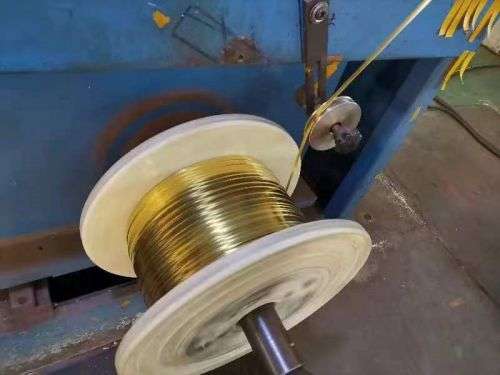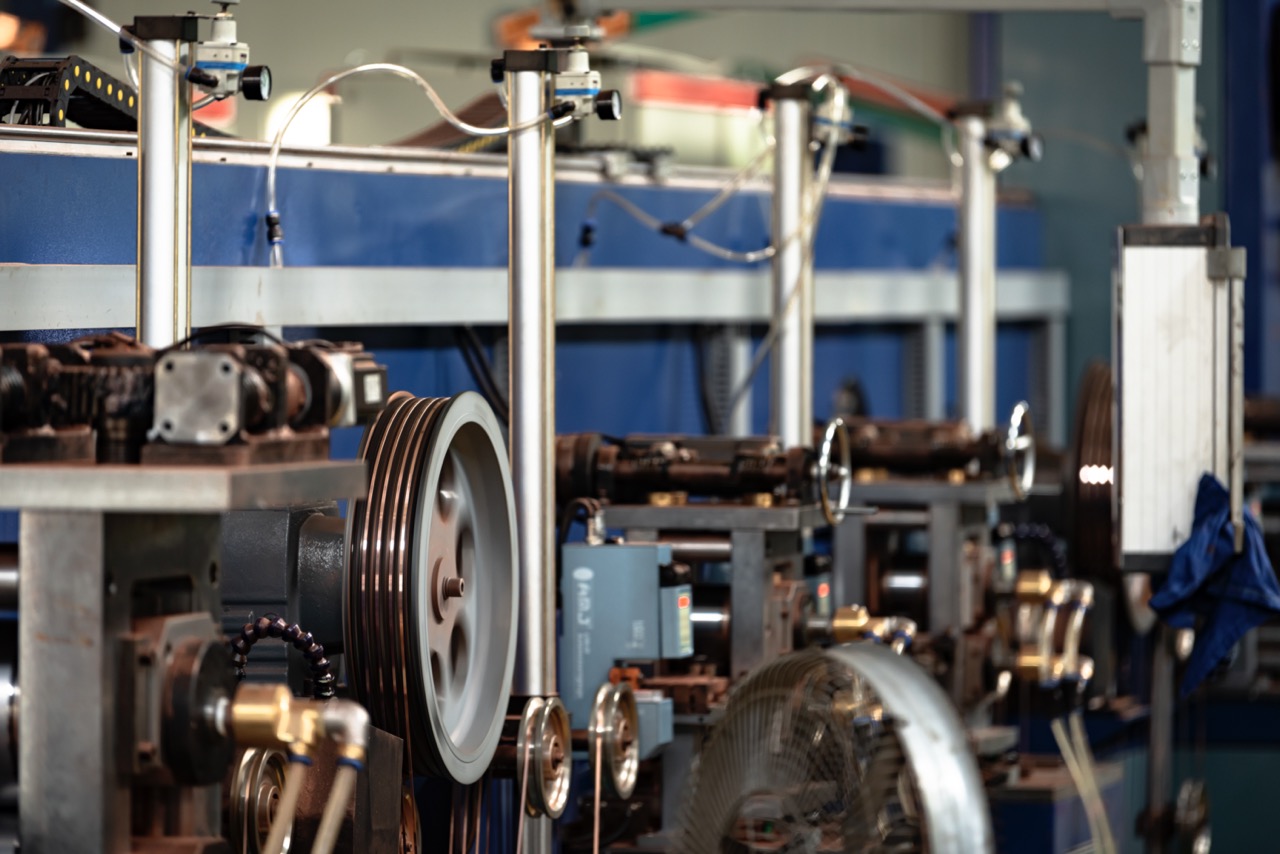The production process of copper strips from copper strip machines includes multiple links to ensure the production of high-quality copper strips that meet technical requirements. The following is a typical process flow for the production of copper strips from copper strip machines:
1. Raw material selection
Raw material type: High-purity electrolytic copper or brass is usually used as the main raw material. The purity and quality of the material directly affect the performance of the finished copper strip.
Alloy material: If you are producing brass strips, you need to select copper-zinc alloy according to customer needs and control the ratio of copper and zinc to achieve the required mechanical properties and corrosion resistance.
2. Smelting
Smelting process: The selected raw materials are placed in a furnace for smelting, and the smelting temperature is usually around 1000°C. During smelting, the composition is strictly controlled and impurities are removed to ensure the purity of the copper.
Composition adjustment: According to the customer's special requirements for the copper strip material, appropriate amounts of other elements (such as tin, lead, etc.) can be added during the smelting process to adjust the composition.
3. Casting
Ingot casting: The molten copper is cast into copper ingots or billets through casting equipment. These copper ingots will become the basic materials for the subsequent rolling process.
Cooling and annealing: After ingot casting, the cooling rate is controlled to avoid stress inside the material. Annealing is used to improve the toughness and ductility of the material to facilitate subsequent processing.
4. Hot rolling
Rough rolling (hot rolling): The cast copper ingot is sent to the rolling mill for preliminary rolling. Through high-temperature rolling, the copper ingot is gradually thinned to form a copper strip of a certain width and thickness.
Size control: During the hot rolling process, the thickness and width of the copper strip are strictly controlled to meet the process requirements.

5. Cold rolling
Precision rolling: The cold rolling process is carried out at room temperature. Through multiple passes of rolling, the copper strip is further thinned to the required final thickness and width.
Improved smoothness: The cold rolling process can not only improve dimensional accuracy, but also significantly improve the smoothness and flatness of the copper strip surface to meet application requirements.
6. Annealing
Eliminate internal stress: Internal stress is generated during cold rolling, which may increase the brittleness of the material. Through annealing, the copper strip is heated at high temperature and then slowly cooled to eliminate internal stress and improve the ductility and fatigue resistance of the material.
Controlling mechanical properties: By adjusting the annealing temperature and time, the hardness and ductility of the copper strip can be controlled to make it suitable for subsequent processing and use requirements.
7. Surface treatment
Surface cleaning: Remove the oxide layer, oil stains, etc. formed during the rolling process, and ensure that the surface of the copper strip is flat and smooth through pickling or mechanical polishing.
Anti-corrosion treatment: In some special applications, the copper strip can be tinned or nickel-plated to improve its corrosion resistance and extend its service life.
8. Cutting and Slitting
Width adjustment: Cut or strip the wide copper strip into the specifications required by the customer to ensure that the width and thickness of the copper strip meet the design requirements.
Precision control: Use high-precision slitting machines to ensure the cutting flatness and accuracy of the copper strip to avoid burrs or dimensional deviations.
9. Finished product inspection
Size inspection: Detect the thickness, width and length of the copper strip to ensure it meets the design and technical requirements.
Performance testing: The mechanical properties (such as tensile strength, elongation, etc.) and electrical properties (such as conductivity, corrosion resistance, etc.) of the copper strip are tested to ensure that it meets the application requirements.
Surface quality inspection: Check the surface finish, flatness, and presence of scratches, oxidation spots and other defects on the copper strip.
10. Packaging and Transportation
Packaging requirements: Packaging is carried out according to customer requirements, and the copper tape is wrapped with protective material to prevent scratches or oxidation during transportation and storage.
Transportation guarantee: The packaged copper strips will be transported by appropriate means to ensure that the product will not be damaged during transportation.
Summarize
The production process of copper strip machine covers multiple steps from raw material selection to finished product packaging. Each link needs to be strictly controlled to ensure the dimensional accuracy, mechanical properties and surface quality of the copper strip. Through advanced production equipment, precise process control and strict quality inspection,RaytronAble to produce high-quality copper strip products that meet customer needs and ensure their excellent performance in various application scenarios.
